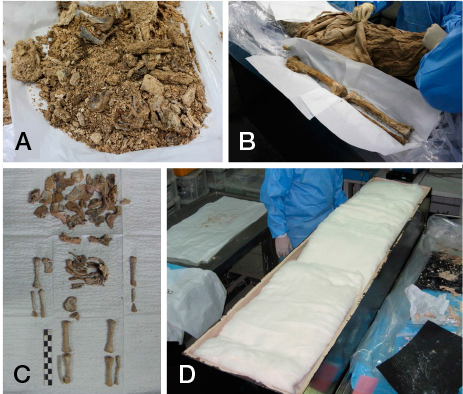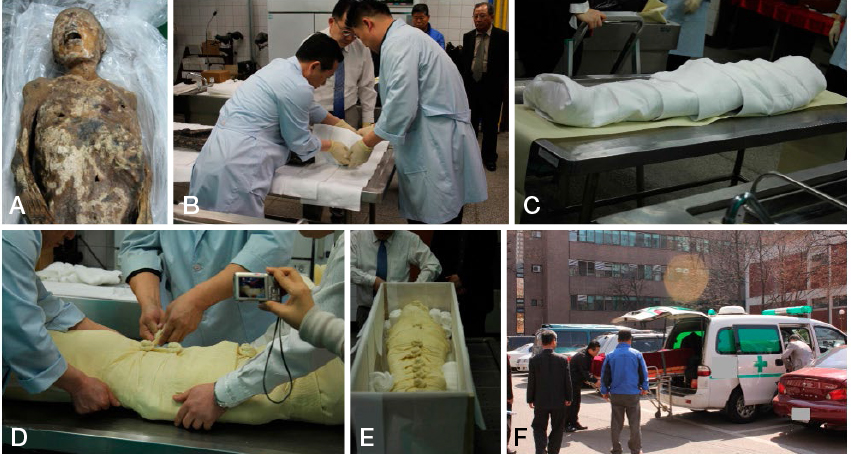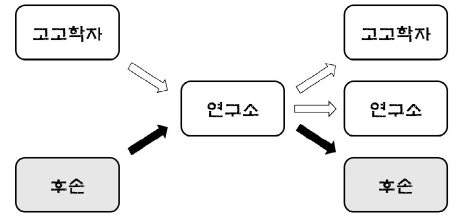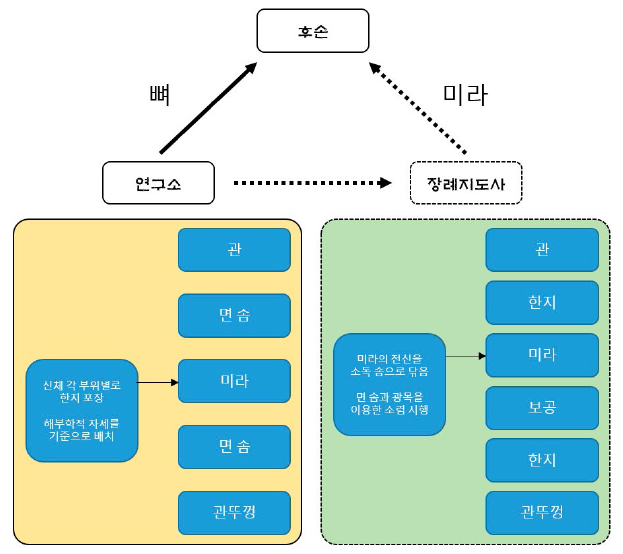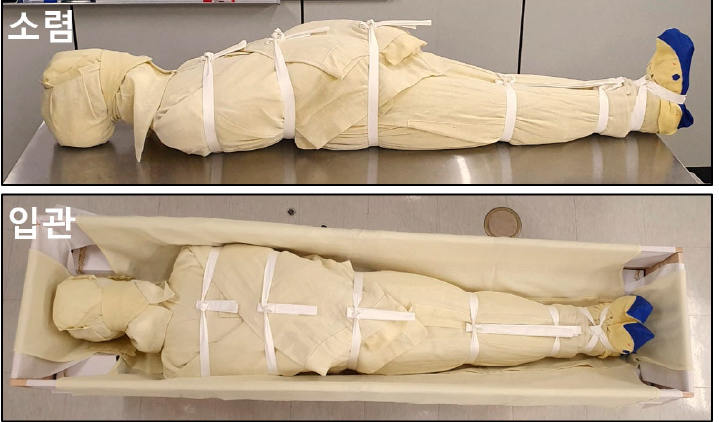Anat Biol Anthropol.
2019 Jun;32(2):77-82. 10.11637/aba.2019.32.2.77.
How to Return Mummified or Skeletal Human Remains to their Descendants after Anthropological Investigation
- Affiliations
-
- 1Department of Anatomy & Cell Biology, Seoul National University College of Medicine, Korea. oxman@snu.ac.kr
- 2Institute of Forensic Science, Seoul National University College of Medicine, Korea.
- 3Oneull Life Gangnam Funeral Education Center, Korea.
- 4Sangmyung University, Korea.
- KMID: 2451561
- DOI: http://doi.org/10.11637/aba.2019.32.2.77
Abstract
- The mummies and skeletons excavated at the archaeological excavation site are an anthropologically important research subject. However, after the scientific analysis on them, it is sometimes necessary return them to their relatives for reburial. The descendants expect that the ancestor's reburial process could be performed in fully respectful manner, but the details of the process have not been fully discussed among the researchers concerned. In this report, we thus tried to share our experience for treatment of the ancient people's dead body before moving over to the family. In general, it is necessary for anthropologists to be skilled enough to carry out the funeral ritual that is commonly accepted among the Korean people. In case of skeletonized cases, each body part should be placed in correct anatomical position inside the coffin. As for the mummies, we will treat them in more respectful manner; for instance, putting them on with new clothes before returning to the family. Taken together, when ancient people's skeletonized or mummified body would be returned to their family, the proper way of treatment should be applied according to each circumstance; and this careful consideration could be a great help to maintain the dignity of the people who was accidentally discovered at the ancient graves in excavation field.
Keyword
Figure
Reference
-
1. Lee EJ, Oh CS, Yim SG, Park JB, Kim YS, Shin MH, et al. Collaboration of archaeologists, historians and bioarchaeologists during removal of clothing from Korean mummy of Joseon dynasty. Int J Hist Archaeol. 2013; 17:94–118.
Article2. Oh CS, Shin DH. Making Animal Model for Korean Mummy Studies. Anthropol Anz. 2014; 71:469–488.3. Seo M, Oh CS, Chai JY, Jeong MS, Hong SW, Seo YM, et al. The Changing Pattern of Parasitic Infection among Korean Populations by Paleoparasitological Study of Joseon Dynasty Mummies. J Parasitol. 2014; 100:147–150.
Article4. Seo M, Oh CS, Hong JH, Chai JY, Cha SC, Bang Y, et al. Estimation of parasite infection prevalence of Joseon people by paleoparasitological data updates from the ancient feces of pre-modern Korean mummies. Anthropol Sci. 2017; 125:9–14.
Article5. Shin DH, Kim YS, Yoo DS, Kim MJ, Oh CS, Hong JH, et al. A Case of Ectopic Paragonimiasis in a 17th Century Korean Mummy. J Parasitol. 2017; 103:399–403.
Article6. Shin DH, Oh CS, Hong JH, Kim Y, Lee SD, Lee E. Paleogenetic study on the 17th century Korean mummy with atherosclerotic cardiovascular disease. PLoS One. 2017; 12:e0183098.
Article7. Lee IS, Lee EJ, Park JB, Baek SH, Oh CS, Lee SD, et al. Acute traumatic death of a 17th century general based on examination of mummified remains found in Korea. Ann Anat. 2009; 191:309–320.
Article8. Shin DH, Oh CS, Hong JH, Lee H, Lee SD, Lee E. Helicobacter pylori DNA obtained from the stomach specimens of two 17th century Korean mummies. Anthropol Anz. 2018; 75:75–87.
Article9. Shin DH, Oh CS, Lee SJ, Lee EJ, Yim SG, Kim MJ, et al. Ectopic paragonimiasis from 400 year old female mummy of Korea. J Archaeol Sci. 2012; 39:1103–1110.10. Oh CS, Seo M, Lim NJ, Lee SJ, Lee EJ, Lee SD, et al. Paleoparasitological report on Ascaris aDNA from an ancient East Asian sample. Mem Inst Oswaldo Cruz. 2010; 105:225–228.
Article11. Oh CS, Hong JH, Park JB, Lee WJ, Bianucci R, Piombino Mascali D, et al. From Excavation Site to Reburial Ground: A Standard Protocol and Related Ethics of Mummy Studies in South Korea. Asian J Paleopathol. 2018; 2:1–8.12. Hwang KS, Kim MH, Park BS, Park WJ, An WH, Lee DJ, et al. Standard Textbook for Funeral Director License [Internet]. Ministry of Health and Welfare;c2012. cited 2019 May 15. Available from: http://www.mohw.go.kr/.
- Full Text Links
- Actions
-
Cited
- CITED
-
- Close
- Share
- Similar articles
-
- Radiocarbon Dating of Skeletal Remains: Case Report
- Anthropological Study on Human Skeletons from Joseon Tomb, for Confirming Ryu Ja-Gwang, a Famous Historical Figure of Medieval Korea
- Human Skeletal Remains from Ancient Burial Sites in India: With Special Reference to Harappan Civilization
- Validation Study of Discriminating Sex using the Atlas from the Digital Korean 3D Human Body Modeling
- Analytical Review of the Forensic Anthropological Techniques for Stature Estimation in Korea

